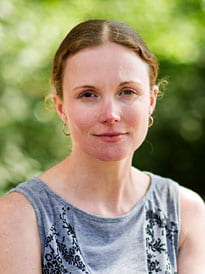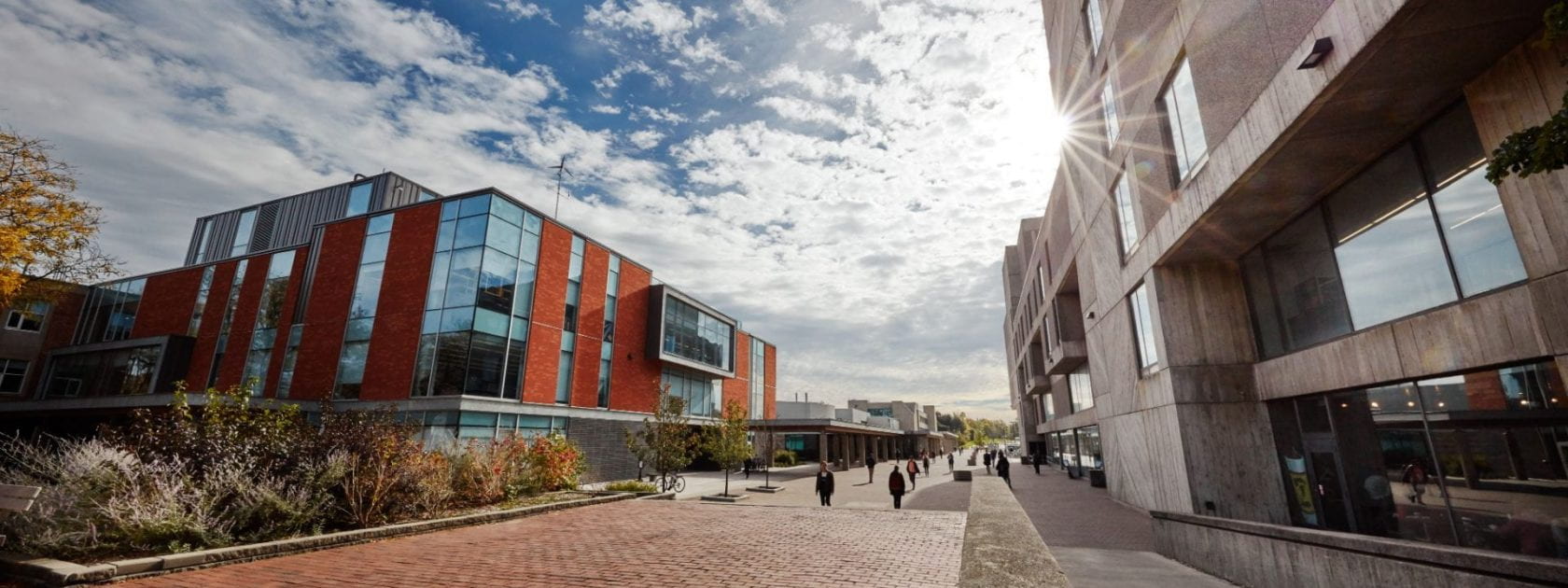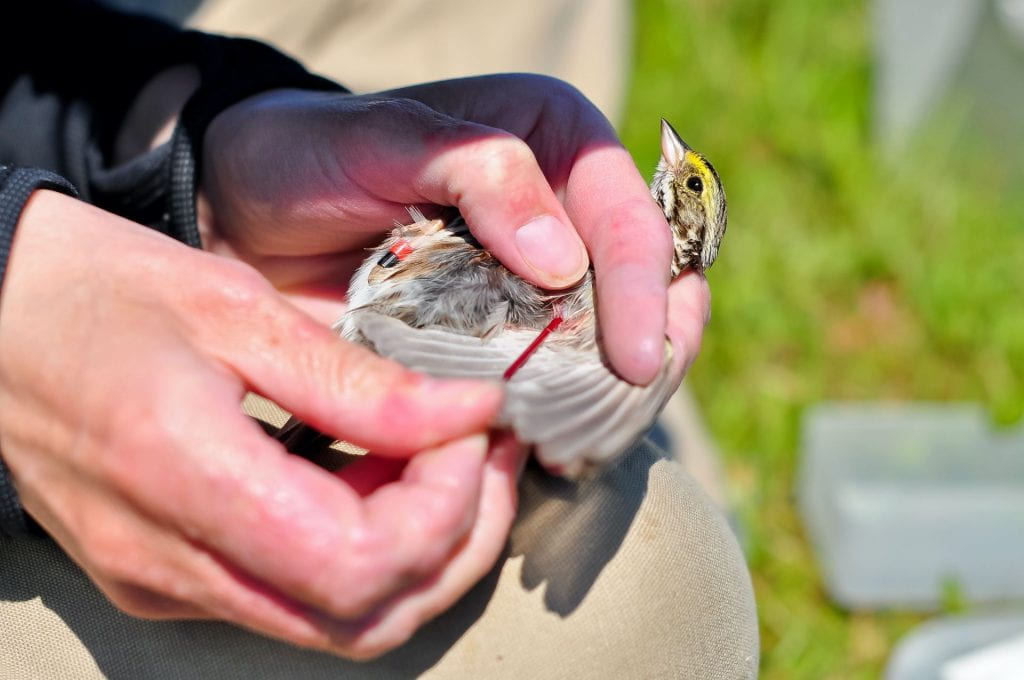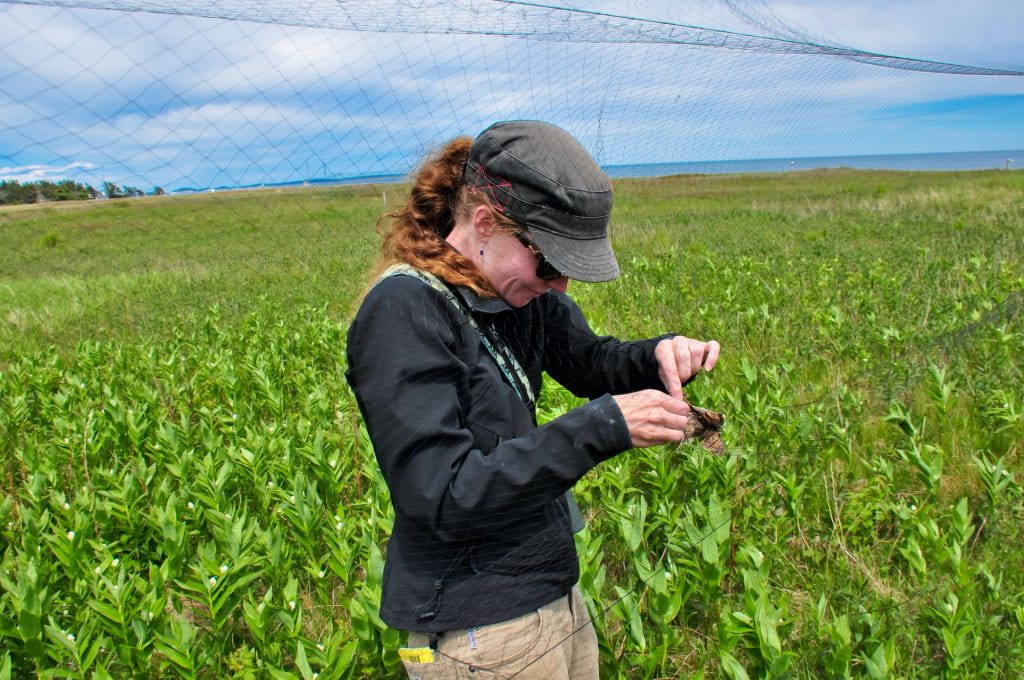Dr. Amy Newman

“There is this tension between wanting to support biodiversity and wildlife health and the reality of needing to feed a growing population.”
– Dr. Newman
Songbird populations in southwestern Ontario have decreased by 70 per cent in the last five decades, as grassland ecosystems are lost to urban sprawl and other factors. But farms and ranches dedicated to agricultural restoration are helping reverse that trend, by taking an integrated approach to wildlife health.
These operations are part of the Alternative Land Use Services (ALUS) organization, which helps farmers restore and create healthy ecosystems on agricultural land. ALUS understands the importance of improving these ecosystems while sustaining agricultural production. The organization provides financial incentives for farmers and ranchers to restore parts of their land.
Dr. Amy Newman, an ecophysiologist from the University of Guelph’s Department of Integrative Biology, is working with 10 such farm properties in Norfolk County to study the impact of restorative practices on songbird biodiversity and physiology.
She’s found that farms dedicated to ALUS’s kind of restoration support greater avian biodiversity than conventional farms.
“The farmers are key to the process.” says Newman, “We have to be mindful of how our wildlife efforts are interconnected with their livelihoods.”
Newman works with specialists, such as farmers and conservation biologists, to navigate the delicate balance between wildlife biodiversity and environmental health and feeding a growing human population. The way animal and environmental health intersects with human health defines the One Health research approach that Newman embraces.
As an ecophysiologist – that is, a researcher who uses physiological tools in natural environments to study animal populations – Newman viewed the songbird population’s decline as a sign that the ecosystems present in lands converted from natural landscapes to farms were not thriving.
That’s where restoration efforts come in. Newman and her lab have documented the positive effects of these actions; indeed, early findings from their study suggest that farms with restored or undisturbed natural habitat support greater avian biodiversity than conventional farms. This includes sensitive songbird populations such as grasshopper sparrows, bobolinks, black and yellow-billed cuckoos, eastern bluebirds, and woodland warblers. Greater songbird diversity also suggests healthier insect populations, thus more potential pollinators to help increase farmers’ crop yields.
Newman is encouraged by these results. She points to the value of One Health in this project — the results reaffirm the idea that increased ecological health favourably impacts animal health and provides further incentive for farmers to incorporate restorative practices into their landscape.
Newman sees One Health as more of a philosophy than a discipline, crediting how it encourages researchers to get “out of their silos” and to be flexible in their approaches to questions of human, animal, and environmental health. She admires the way One Health provides a common base for approaching research questions, while allowing for enormous amounts of creativity in practice.
“One Health gives us the opportunity to change our focus,” she says. “It’s akin to a camera where you have interchangeable lenses from all different disciplines with which you can look at the same landscape.”
This project is partially funded by the Weston Family Ecosystem Innovation Award.
Learn more about Dr. Newman’s work on her website https://comparativephys.ca/newmanlab/ or her lab’s Twitter account @Newman_lab
By Anna McMenemy
Share this article





